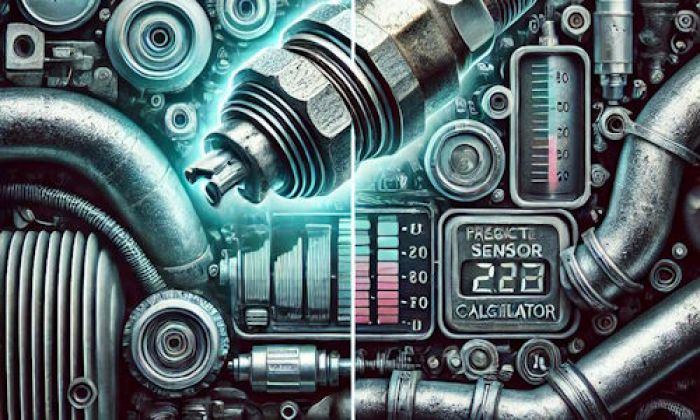The Audi S5 is a sportscar that's basically a step up in terms of performance from the A5 series. The 2022 version comes with a 349hp turbo V6 engine but at a price hike of about $10,000. Not only does the S5 handle better and accelerate considerably quicker, but it also looks slightly more refined than the A5. However, it does still have some shortcomings. Namely, it doesn't sound very melodious, and it doesn't come with a manual transmission.
Gearbox Malfunction message highlights
- Common reasons:clutch in DCTs, low fluid level, low 12V battery glitch
- How to fix:replace/recharge battery, add transmission fluid, replace the clutch kit (in DCT)
- Possible consequences:fatal transmission damage, car completely immobilized
- Priority level:High
- Can you drive?No
- DIY repair:Impossible
- Repair price range:$150-$5000

Symptoms of Imminent Transmission Problems
Audi's automatic transmission issues can be a result of many things, including something as simple as low transmission fluid levels or worn clutches, or something slightly more complex, such as a faulty valve body, transmission fluid pump, transmission control module, or electronic fault. Typically, the most common problems include:
- Failing to shift
- Stuck in limp mode
- Bangs into gear
- Unable to go in reverse
- Unable to shift out the park
- Tiptronic not engaging
- Unable to go in gear
- Won't move when in gear
Judder and Bang When Shifting from Neutral into Gear
Audi cars with a Tiptronic transmission, in general, can experience a judder and a bang when going from Neutral into Drive or Reverse gear. More often than not, the check engine light will pop up, and you'll get a P0706 code.
The potential cause for this is the connector from the transmission range sensor not being sealed properly, and as a result, dirt and water getting inside. This can lead to corrosion and distortion of the signals. If that's the case, simply clean it thoroughly, and make sure the connector is sealed properly.
Another potential cause is the sensor having an internal fault itself. Unfortunately, you can't service the transmission range sensor, so you'll have to get a replacement. You'll find this sensor at the driver's side of the gearbox, under the car.
RPM Oscillations and Clutch Slip
Another symptom of potential transmission problems is RPM oscillations when in 4th and 5th gear, and the clutch slipping. In other words, when driving down the highway in 4th or 5th gear, the engine speed can go up and down by a few (up to several) hundred RPMs. If you're lucky, the engine light will pop up to let you know something's wrong, and you'll get a P0741 code.
A potential cause for this is a damaged clutch solenoid valve, torque converter, connector or wiring, a worn-out torque converter clutch, or a worn down or clogged torque converter solenoid valve. Whatever the case, check all the wiring, and use a diagnostic tool to troubleshoot all of the parts mentioned here. A timely replacement will go a long way in preventing further issues.
Rattling or Grinding Noise
When your Audi S5 is in drive, you may experience a grinding noise. This can happen when you start the engine cold, and the noises may fade when it warms up. However, the grinding noise may also persist even after the engine warms up. The frequency of the noise will generally follow the engine speed.
Potential causes for rattling and grinding noises include worn-out or damaged needle bearings inside the torque converter. If that's the issue, you'll also notice vibrations when accelerating. Alternatively, the transmission fluid level may be low, in which case you'll need to top it off. If you don't keep track of when was the last time you replaced it, consider changing the transmission fluid alongside the filter.
PRNDS Flashing
Many Audis with Multitronic transmission are susceptible to a range of unusual issues, simply because the transmission is continuously variable, using a specific internal architecture. As a result, the symptoms can lead to many different issues. More often than not, when the PRNDS symbol flashes on the dashboard, it may have to do with the transmission refusing to engage any gear.
Sometimes, the issue can be resolved by simply restarting your car. Other times, however, it might have to do with low transmission fluid levels, a clogged oil filter, or degraded fluid in general, in which case you should check the condition of the fluid and replace it if necessary.
Alternatively, it may have to do with a faulty transmission oil pump or a faulty transmission control unit. If it's the first, use a specialized diagnostic tool to check the state of the pump(s) and replace them if necessary. If it's the latter, you'll have to take your car to a specialized workshop for repairs.
Hunting When Accelerating or Hesitation When Setting Off
If you experience a lack of response when sitting or when trying to accelerate, it may have to do with improper TCU software. Initially, these symptoms may show when driving more aggressively but may become more apparent in due time. If the TCU software is inadequate, try updating it.
Another issue that can cause these problems are worn clutch packs. Clutch discs wear out over time, resulting in the metal shavings being present in the oil filter. If that's the case, you'll have to replace the clutch pack. Consider aftermarket clutch packs, as they're tailored to reduce the chance of this happening in the foreseeable future. However, expect to pay extra.
DSG Transmission Going Limp
If the DSG transmission goes into limp mode, your car will be stuck in 3rd gear, and you'll see the PRNDS symbol flash on the dashboard. If this happens, there's a stored code that can assist with tracking the problem.
The main cause for the DSG transmission going limp is worn clutches. You can try resetting the gearbox using a specialized Audi diagnostic tool, and if that doesn't help - replace the clutch kit.
Alternatively, the problem might occur due to sensor failures, typically the temperature sensors. If it's a faulty sensor, identify which one it is, and replace it.
If neither the clutches nor the sensors are faulty, it might be a Mechatronic unit failure, in which case multiple codes will be triggered, including implausible gear ratios and sensors. Unfortunately, these units aren't serviceable, and you'll probably have to get a replacement.
How Much Do Audi S5 Transmission Repairs Cost?
There is no definitive answer to this question. There's both good news, and bad news. The good news is that if a professional mechanic has found the problem and says they can fix it - you won't need to replace the entire transmission. The bad news, on the other hand, is that repairs can be quite costly.
How costly? It depends on the specific model year of your Audi S5, the extent of the damage, whether you perform the repairs at a dealership or independent shop, as well as your location. Transmission leaks and fluid flushes are the most common repairs performed, with linkage and solenoid replacement trailing just behind.
Regardless, repairs are often labor-intensive and time-consuming, and unless it's one of the aforementioned common repairs, you can expect to be charged anywhere between $3000-6000 for the parts, and $1500-2000 for the labor.
Are Dual-Clutch Transmissions in Other Sports Cars Better?
Even though Audi was one of the first manufacturers to implement the dual-clutch transmission on a production vehicle, they fall behind their competitors (and also the parent company) Volkswagen.
When the topic of dual-clutch transmission comes up, the first cars that pop to mind are high-end luxury cars like Porsche and Ferrari. However, The Golf R and GTI are probably the two models that provide the best and smoothest shifting out of all vehicles in the lower price range.
Other automakers like Ford and Hyundai also offer low-cost sedans with a quality dual-clutch transmission, but they still pale in comparison to the Golf R and GTI.
The Final Word
While not every Audi S5 will have transmission issues, enough of them do that many people tend to avoid buying them. The 2013, 2014 and 2015 S5s are notorious for having a higher rate of transmission issues, but the later models are probably still a safe bet if you're keen on getting an Audi S5 automatic. Besides transmission problems, the S5 performs amazingly well when compared to other vehicles in its price range.
About the authors
The CarAraC research team is composed of seasoned auto mechanics and automotive industry professionals, including individuals with advanced degrees and certifications in their field. Our team members boast prestigious credentials, reflecting their extensive knowledge and skills. These qualifications include: IMI: Institute of the Motor Industry, ASE-Certified Master Automobile Technicians; Coventry University, Graduate of MA in Automotive Journalism; Politecnico di Torino, Italy, MS Automotive Engineering; Ss. Cyril and Methodius University in Skopje, Mechanical University in Skopje; TOC Automotive College; DHA Suffa University, Department of Mechanical Engineering






Add comment